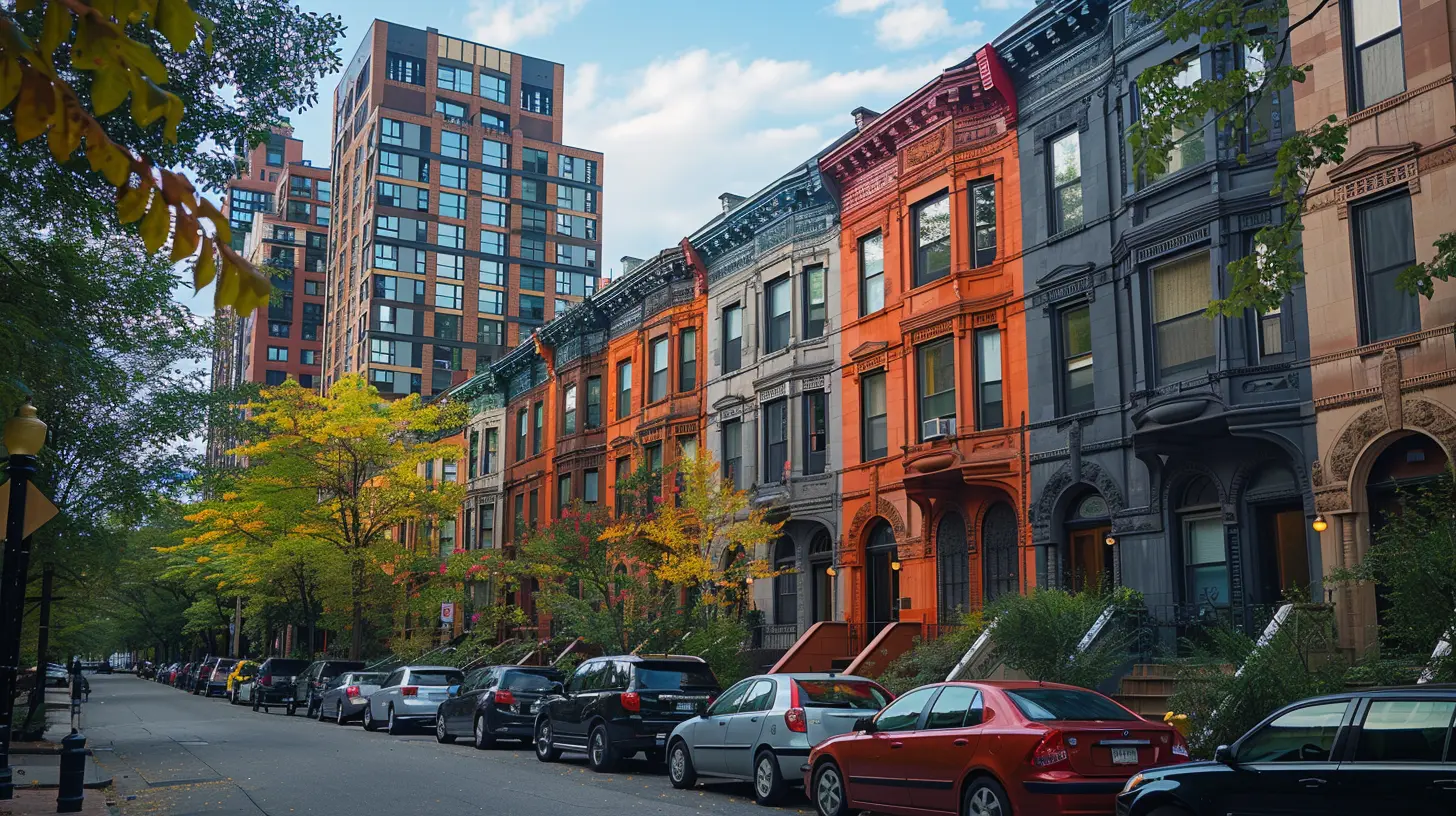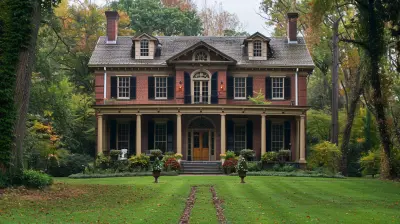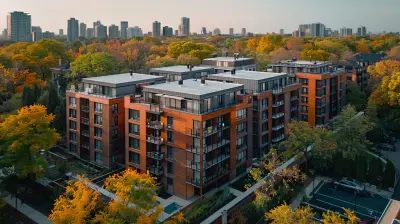The Impact of Interest Rates on Multifamily Real Estate Investments
16 October 2025
Multifamily real estate investments have always been a solid choice for investors looking for steady cash flow and long-term appreciation. But if there’s one thing that can dramatically influence their profitability, it’s interest rates. Whether you're an experienced investor or just dipping your toes into real estate, understanding how interest rates affect multifamily properties is crucial.
So, how exactly do interest rates impact these types of investments? And what should investors watch out for? Let’s break it down in simple terms.

Understanding Interest Rates in Real Estate
Before diving into the direct impact on multifamily properties, let's clarify what interest rates actually are.In simple terms, an interest rate is the cost of borrowing money. When the Federal Reserve (or any central bank) adjusts interest rates, it affects how much banks charge when lending money to borrowers—including real estate investors.
Higher interest rates mean loans become more expensive, while lower rates make borrowing cheaper. This cycle has a ripple effect across the real estate industry, especially in multifamily investments.

How Interest Rates Affect Multifamily Real Estate
1. Financing Costs and Investment Returns
One of the biggest ways interest rates influence multifamily real estate is through financing costs. Since most investors rely on loans to acquire properties, any fluctuation in interest rates directly impacts their expenses.- Higher Rates → More expensive mortgages → Lower cash flow
- Lower Rates → Cheaper financing → Better cash flow
For instance, if an investor secures a loan at 3% interest versus 6%, their monthly mortgage payment is significantly lower at 3%, allowing them to generate better profit margins.
2. Cap Rates and Property Valuations
Cap rates (capitalization rates) play a significant role in property valuation. They are calculated by dividing the property’s net operating income (NOI) by its purchase price.- When Interest Rates Rise: Cap rates tend to increase, which usually leads to lower property values. Investors demand higher returns to compensate for higher borrowing costs.
- When Interest Rates Fall: Cap rates compress, often driving property values higher since borrowing is cheaper and investors are willing to pay more.
A higher interest rate environment can, therefore, negatively impact multifamily property values, making it more challenging for investors to sell at a profit.
3. Rental Demand and Tenant Affordability
Surprisingly, interest rates don’t just affect investors—they impact renters too!When rates go up, mortgages become more expensive, pushing some potential homebuyers to remain renters. This can increase rental demand, which is a good thing for multifamily property owners. More demand often means landlords can raise rents and improve their return on investment.
On the flip side, if rates drop significantly, renting may become less attractive, as more people can afford their own homes. In such cases, landlords might face slower rent growth or increased vacancy rates.
4. Supply and Development of Multifamily Properties
High interest rates don’t just affect existing properties; they influence new developments too.- When borrowing costs rise: Developers may delay new multifamily projects because financing construction becomes more expensive. This could lead to a limited housing supply in the future, pushing up rental prices.
- When borrowing costs decline: More new projects get approved, increasing competition and potentially slowing rent growth.
For investors, this means staying on top of market trends and supply dynamics is crucial when making investment decisions.
5. Investor Sentiment and Market Uncertainty
Let’s not forget the psychological side of things. When interest rates rise, many investors adopt a “wait and see” approach, fearing future rate hikes or economic instability. This can create slower transaction volumes in the multifamily market.On the contrary, when rates are low, investors tend to move quickly to lock in cheap financing, driving up demand and property prices.
6. Refinancing Opportunities
When interest rates drop, savvy investors jump on the chance to refinance their loans. Refinancing at a lower rate can reduce monthly mortgage payments, increase cash flow, and even free up capital to reinvest in other properties.However, when rates rise, refinancing becomes less attractive, and investors holding adjustable-rate loans might face higher payments, squeezing their profits.

Strategies for Multifamily Investors in a Changing Interest Rate Environment
The real estate market is constantly shifting, and savvy investors adapt to interest rate fluctuations. Here are some strategies to navigate the ups and downs:1. Lock in Fixed-Rate Loans
If you’re planning a long-term investment, a fixed-rate mortgage can provide stability. This shields you from potential rate hikes, ensuring predictable expenses.2. Focus on Strong Rental Markets
Regardless of interest rate trends, investing in markets with strong job growth, population increases, and high rental demand can help you maintain steady returns.3. Improve Property Operations
Boosting your property's net operating income (NOI) through better management, modernization, and reducing expenses can help offset higher borrowing costs.4. Consider Value-Add Investments
Properties with room for improvement can generate greater returns, helping investors mitigate the impact of rising interest rates. Simple upgrades like renovations, energy-efficient upgrades, or better property management can increase rental income.5. Be Ready to Refinance When Rates Drop
Even if you lock in a fixed rate, keep an eye on interest rate trends. A future dip could present an opportunity to refinance and lower your costs.6. Diversify Your Portfolio
Instead of putting all your eggs in one basket, consider investing in properties across different cities or asset classes. This helps spread risks associated with changing interest rate environments.
Conclusion
Interest rates play a massive role in multifamily real estate investments, influencing borrowing costs, valuations, rental demand, and overall investor sentiment. While rising interest rates can pose challenges, they also create opportunities—especially for those who plan strategically.Smart investors don’t panic over changing rates; they adapt. Whether it’s locking in fixed financing, focusing on high-growth markets, or improving property operations, there are plenty of ways to thrive no matter where interest rates are headed.
At the end of the day, real estate is a long-term game. If you make informed decisions, keep an eye on market trends, and stay flexible, you’ll be well-positioned to succeed.
all images in this post were generated using AI tools
Category:
Multifamily PropertiesAuthor:

Vincent Clayton
Discussion
rate this article
1 comments
Blade McFarland
Interest rates may rise faster than my morning coffee consumption, but don’t fret! Just remember, in the world of multifamily investments, what goes up can also come down—like my enthusiasm for Mondays!
October 19, 2025 at 1:02 PM

Vincent Clayton
Absolutely! It's important to stay adaptive in multifamily investments as interest rates fluctuate. Just like your coffee routine, maintaining a balanced approach can help navigate market changes.


